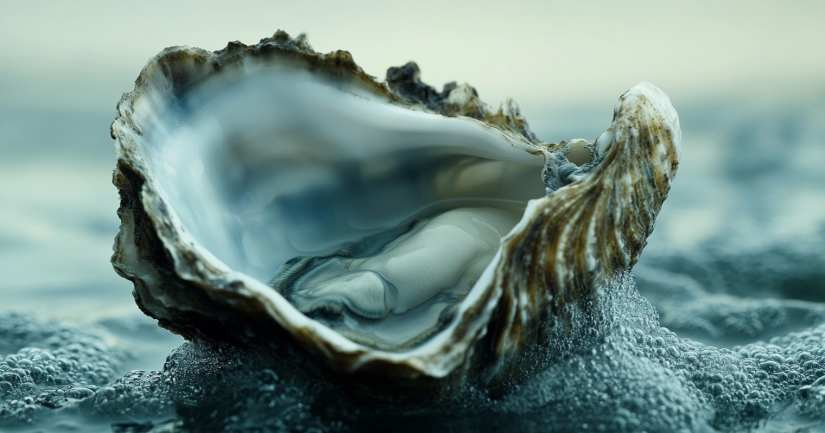Oyster Trivia Test Your Knowledge of These Remarkable Shellfish! Hidden beneath the waves and along coastal shorelines, oysters are some of the most fascinating and valuable marine creatures. Known for their pearl-producing abilities, unique filtration skills, and vital role in marine ecosystems, these bivalves have been harvested for centuries for their delicate taste and shimmering treasures. But there’s much more to oysters than meets the eye! How much do you really know about these incredible mollusks? Take our Oyster Trivia Quiz and find out!
Oysters are bivalve mollusks, meaning they have two shells that protect their soft bodies. They live in estuaries, tidal zones, and reefs, filtering gallons of water each day to keep marine ecosystems clean. Some species are harvested for food, while others are prized for their ability to produce beautiful pearls.
🦪 Oysters Can Filter Up to 50 Gallons of Water a Day – These shellfish play a crucial role in improving water quality by removing pollutants, algae, and excess nutrients from the ocean.
Oysters are full of hidden surprises, but the ocean’s treasures don’t end here! Dive into the captivating world of the intelligent octopus in our Octopus Quiz or take a closer look at tiny, powerful organisms in our Plankton Quiz.

Mind-Blowing Oyster Facts That Might Surprise You
- Not All Oysters Produce Pearls – While some oysters create pearls, others are cultivated specifically for seafood and never form any gems.
- Oysters Can Change Their Gender – Many oysters begin life as males and later transition to females as they grow older.
- They Have Been Around for Over 500 Million Years – Oysters are ancient creatures, surviving multiple climate shifts and extinctions.
- Oyster Reefs Protect Shorelines – By forming large reefs, oysters help prevent coastal erosion, providing shelter for fish and marine life.
- Raw Oysters Are Still Alive When Served – Fresh oysters are usually shucked and eaten alive, keeping their flavor and texture at peak freshness.
- The World’s Largest Oyster Was Over a Foot Long – A record-breaking oyster was measured at 13 inches (33 cm) long, found off the coast of Denmark.
- Oysters Have Heartbeats and Can “Hear” Their Environment – Studies show that oysters can sense vibrations in the water, reacting to environmental changes and even tides.
- The Flavor of an Oyster Depends on Its Habitat – Just like wine has terroir, oysters have “merroir,” meaning their taste changes depending on the water quality, temperature, and region they come from.
The Role of Oysters in Marine Ecosystems
Oysters are more than just a delicacy—they are essential to ocean health. By filtering water, they help reduce pollution and create habitats for small fish and crustaceans. However, overharvesting, pollution, and climate change have led to a decline in wild oyster populations, prompting efforts to restore oyster reefs and promote sustainable aquaculture.
Are You Ready to Take the Ultimate Oyster Trivia Quiz?
If you love marine life, seafood science, or conservation efforts, this Oyster Trivia Quiz is perfect for you! Whether you’re fascinated by pearl formation, water filtration, or the global oyster industry, this quiz will challenge your knowledge and reveal amazing facts about these remarkable shellfish.
So, are you ready to test your knowledge and explore the world of oysters? Take the Oyster Trivia Quiz now and see if you’re a true bivalve expert! 🌊🦪
Love the ocean? Test your knowledge with the Guess the Sea Animal Quiz, discover your marine match in the What Sea Animal Am I Quiz, or explore more Marine Quizzes for underwater fun!
Oyster – FAQ
Oysters are bivalve mollusks found in marine and freshwater environments. They play a crucial role in their ecosystems by filtering water, which helps improve water quality. Additionally, oysters are valued as a culinary delicacy, rich in nutrients and known for their unique flavors.
Oysters can be harvested through various methods, including wild harvesting and aquaculture. Wild harvesting involves collecting oysters from their natural habitats, while aquaculture refers to farming oysters in controlled environments. Both methods require adherence to sustainable practices to ensure the health of oyster populations.
Oysters are highly nutritious, offering several health benefits. They are an excellent source of protein, omega-3 fatty acids, and essential vitamins and minerals, such as zinc and vitamin B12. Regular consumption may support immune function, promote heart health, and contribute to overall well-being.
Yes, while oysters are generally safe to eat, there are some risks. Consuming raw or undercooked oysters can expose individuals to harmful bacteria and viruses, particularly Vibrio species. It is essential to source oysters from reputable suppliers and to cook them properly to minimize health risks.
Oysters can be enjoyed in various ways, whether raw, grilled, baked, or in soups and stews. They can be paired with complementary flavors such as lemon, garlic, or hot sauces. For those new to oysters, starting with raw oysters and a simple mignonette sauce can provide a delightful introduction to their unique taste.
